-
EXECUTIVE SUMMARY 18
-
GLOBAL AIRCRAFT AFTERMARKET PARTS MARKET, BY PARTS 19
-
GLOBAL AIRCRAFT AFTERMARKET PARTS MARKET, BY APPLICATION 20
-
GLOBAL AIRCRAFT AFTERMARKET PARTS MARKET, BY REGION 21
-
MARKET INTRODUCTION 22
-
DEFINITION 22
-
SCOPE OF THE STUDY 22
-
RESEARCH OBJECTIVE 22
-
MARKET STRUCTURE 23
-
KEY BUYING CRITERIA 24
-
RESEARCH METHODOLOGY 25
-
RESEARCH PROCESS 25
-
PRIMARY RESEARCH 26
-
SECONDARY RESEARCH 27
-
MARKET SIZE ESTIMATION 27
-
TOP DOWN & BOTTOM-UP APPROACH 28
-
FORECAST MODEL 29
-
LIST OF ASSUMPTIONS 30
-
MARKET INSIGHTS 31
-
IMPACT OF COVID-19 34
-
IMPACT OF COVID-19 ON GLOBAL ECONOMY 34
-
IMPACT OF COVID-19 ON THE GLOBAL AIRCRAFT AFTERMARKET PARTS MARKET 34
-
SUPPLY CHAIN IMPACT 34
- IMPACT ON MANUFACTURER/DEVELOPER 34
- IMPACT ON COMPONENT/SERVICES SUPPLIER 34
- IMPACT ON DISTRIBUTION/LOGISTICS 35
- IMPACT ON CONSUMER 35
-
MARKET RECOVERY ANALYSIS 35
-
MARKET DYNAMICS 36
-
INTRODUCTION 36
-
DRIVERS 37
- INCREASING COMMERCIAL AIRCRAFT FLEET 37
- AGING MILITARY AIRCRAFT FLEETS 37
- DRIVERS IMPACT ANALYSIS 38
-
RESTRAINTS 38
- STRINGENT REGULATORY GUIDELINES 38
- HIGH IMPORT DUTIES ON AIRCRAFT SPARE PARTS 38
- RESTRAINTS IMPACT ANALYSIS 39
-
OPPORTUNITIES 39
- AVAILABILITY OF AIRCRAFT AFTERMARKET PARTS ON E-COMMERCE PLATFORMS 39
-
TREND 40
- USE OF 3D METAL PRINTING 40
- RISING ACCEPTANCE OF PARTS MANUFACTURER APPROVAL (PMA) PARTS 40
- GROWING IMPORTANCE OF BIG DATA 42
- AUTOMATION IN THE AIRCRAFT AFTERMARKET PARTS 42
- INCREASING DEMAND FOR AIRCRAFT MRO OUTSOURCING 42
-
MARKET FACTOR ANALYSIS 43
-
SUPPLY/VALUE CHAIN ANALYSIS 43
- R&D 44
- MANUFACTURING 44
- DISTRIBUTION & SALES 44
- POST-SALES MONITORING 44
-
PORTER’S FIVE FORCES MODEL 45
- THREAT OF NEW ENTRANTS 45
- BARGAINING POWER OF SUPPLIERS 45
- BARGAINING POWER OF BUYERS 46
- THREAT OF SUBSTITUTES 46
- INTENSITY OF RIVALRY 46
-
GLOBAL AIRCRAFT AFTERMARKET PARTS MARKET, BY PARTS 47
-
OVERVIEW 47
- MRO PARTS 47
- ROTABLE SCRAP REPLACEMENT PARTS 47
- CONSUMABLE 47
- EXPENDABLE 48
-
GLOBAL AIRCRAFT AFTERMARKET PARTS MRKET SIZE, MARKET ESTIMATES & FORECAST BY PARTS, 2024-2032 50
- GLOBAL AIRCRAFT AFTERMARKET PARTS MARKET SIZE: MARKET ESTIMATES & FORECAST BY PARTS, 2024-2032 50
- GLOBAL AIRCRAFT AFTERMARKET PARTS MARKET SIZE: MARKET ESTIMATES & FORECAST BY EXPENDABLE TYPE, 2024-2032 50
-
GLOBAL AIRCRAFT AFTERMARKET PARTS MARKET, BY APPLICATION 51
-
OVERVIEW 51
- COMMERCIAL 51
- MILITARY 52
-
GLOBAL AIRCRAFT AFTERMARKET PARTS MARKET SIZE: MARKET ESTIMATES & FORECAST BY APPLICATION, 2024-2032 53
- GLOBAL AIRCRAFT AFTERMARKET PARTS MARKET SIZE: MARKET ESTIMATES & FORECAST BY APPLICATION, 2024-2032 53
- GLOBAL AIRCRAFT AFTERMARKET PARTS MARKET SIZE: MARKET ESTIMATES & FORECAST BY COMMERCIAL APPLICATION, 2024-2032 53
- GLOBAL AIRCRAFT AFTERMARKET PARTS MARKET SIZE: MARKET ESTIMATES & FORECAST BY MILITARY APPLICATION, 2024-2032 53
-
GLOBAL DRONE LOGISTICS AND TRANSPORATION MARKET, BY REGION 54
-
OVERVIEW 54
-
NORTH AMERICA 56
- U.S. 58
- CANADA 60
-
EUROPE 62
- GERMANY 64
- UK 66
- FRANCE 67
- ITALY 69
- REST OF EUROPE 70
-
ASIA-PACIFIC 72
- CHINA 74
- JAPAN 76
- INDIA 77
- REST OF ASIA-PACIFIC 79
-
MIDDLE EAST & AFRICA 81
- UAE 83
- SAUDI ARABIA 85
- ISRAEL 86
- REST OF MIDDLE EAST & AFRICA 88
-
LATIN AMERICA 90
- BRAZIL 92
- MEXICO 94
- REST OF LATIN AMERICA 96
-
COMPETITIVE LANDSCAPE 98
-
COMPETITIVE OVERVIEW 98
-
COMPETITIVE BENCHMARKING 98
-
MAJOR PLAYERS IN THE GLOBAL AIRCRAFT AFTERMARKET PARTS MARKET 99
-
MAJOR GROWTH STRATEGIES IN THE GLOBAL AIRCRAFT AFTERMARKET PARTS MARKET 100
-
LEADING PLAYERS IN TERMS OF THE NUMBER OF DEVELOPMENTS IN THE GLOBAL AIRCRAFT AFTERMARKET PARTS MARKET 101
-
KEY DEVELOPMENTS & GROWTH STRATEGIES 101
- CONTRACTS AND PRODUCT INTEGRATIONS 101
-
KEY DEVELOPMENTS & GROWTH STRATEGIES 103
- PRODUCT LAUNCH/PRODUCT DEVELOPMENT/APPROVAL 103
-
KEY DEVELOPMENTS & GROWTH STRATEGIES 104
- EXPANSION/JOINT VENTURE 104
-
COMPANY PROFILES 105
-
AAR 105
- COMPANY OVERVIEW 105
- FINANCIAL OVERVIEW 105
- PRODUCTS OFFERED 106
- KEY DEVELOPMENTS 106
- SWOT ANALYSIS 107
- KEY STRATEGIES 107
-
A.J. WALTER AVIATION LIMITED 108
- COMPANY OVERVIEW 108
- FINANCIAL OVERVIEW 108
- PRODUCTS OFFERED 108
- KEY DEVELOPMENTS 109
- SWOT ANALYSIS 109
- KEY STRATEGIES 109
-
AVIALL 110
- COMPANY OVERVIEW 110
- FINANCIAL OVERVIEW 110
- PRODUCTS OFFERED 110
- KEY DEVELOPMENTS 110
- SWOT ANALYSIS 111
- KEY STRATEGIES 111
-
EATON 112
- COMPANY OVERVIEW 112
- FINANCIAL OVERVIEW 113
- PRODUCTS/SERVICES OFFERED 114
- KEY DEVELOPMENTS 114
- SWOT ANALYSIS 115
- KEY STRATEGIES 115
-
GENERAL ELECTRIC COMPANY 116
- COMPANY OVERVIEW 116
- FINANCIAL OVERVIEW 116
- PRODUCTS/SERVICES OFFERED 117
- KEY DEVELOPMENTS 117
- SWOT ANALYSIS 118
- KEY STRATEGIES 118
-
HONEYWELL INTERNATIONAL INC. 119
- COMPANY OVERVIEW 119
- FINANCIAL OVERVIEW 119
- PRODUCTS/SERVICES OFFERED 120
- KEY DEVELOPMENTS 120
- SWOT ANALYSIS 121
- KEY STRATEGIES 121
-
RAYTHEON TECHNOLOGIES CORPORATION 122
- COMPANY OVERVIEW 122
- FINANCIAL OVERVIEW 123
- PRODUCTS/SERVICES OFFERED 123
- KEY DEVELOPMENTS 124
- SWOT ANALYSIS 124
- KEY STRATEGIES 124
-
MEGGITT PLC 125
- COMPANY OVERVIEW 125
- FINANCIAL OVERVIEW 125
- PRODUCTS/SERVICES OFFERED 126
- KEY DEVELOPMENTS 126
- SWOT ANALYSIS 127
- KEY STRATEGIES 127
-
PARKER HANNIFIN CORPORATION 128
- COMPANY OVERVIEW 128
- FINANCIAL OVERVIEW 128
- PRODUCTS OFFERED 129
- KEY DEVELOPMENTS 129
- SWOT ANALYSIS 130
- KEY STRATEGIES 130
-
KELLSTROM AEROSPACE 131
- COMPANY OVERVIEW 131
- FINANCIAL OVERVIEW 131
- PRODUCTS OFFERED 131
- KEY DEVELOPMENTS 131
- SWOT ANALYSIS 132
- KEY STRATEGIES 132
-
APPENDIX 133
-
REFERENCES 133
-
-
LIST OF TABLES
-
LIST OF ASSUMPTIONS 30
-
INTERNATIONAL REGULATIONS RELATING TO ALTERNATE PARTS (PMA) BY COUNTRY 41
-
GLOBAL AIRCRAFT AFTERMARKET PARTS MARKET ESTIMATES & FORECAST, BY PARTS, 2024-2032 (USD MILLION) 50
-
GLOBAL AIRCRAFT AFTERMARKET PARTS MARKET ESTIMATES & FORECAST, BY EXPENDABLE TYPE, 2024-2032 (USD MILLION) 50
-
GLOBAL AIRCRAFT AFTERMARKET PARTS MARKET ESTIMATES & FORECAST, BY APPLICATION, 2024-2032 (USD MILLION) 53
-
GLOBAL AIRCRAFT AFTERMARKET PARTS MARKET ESTIMATES & FORECAST, BY COMMERCIAL APPLICATION, 2024-2032 (USD MILLION) 53
-
GLOBAL AIRCRAFT AFTERMARKET PARTS MARKET ESTIMATES & FORECAST, BY MILITARY APPLICATION, 2024-2032 (USD MILLION) 53
-
GLOBAL AIRCRAFT AFTERMARKET PARTS MARKET SIZE, BY REGION, 2024-2032 (USD MILLION) 55
-
NORTH AMERICA: AIRCRAFT AFTERMARKET PARTS MARKET SIZE, BY COUNTRY, 2024-2032 (USD MILLION) 56
-
NORTH AMERICA AIRCRAFT AFTERMARKET PARTS MARKET SIZE ESTIMATES & FORECAST, BY PARTS, 2024-2032 (USD MILLION) 57
-
NORTH AMERICA AIRCRAFT AFTERMARKET PARTS MARKET VALUE ESTIMATES & FORECAST, BY EXPENDABLE PARTS, 2024-2032 (USD MILLION) 57
-
NORTH AMERICA AIRCRAFT AFTERMARKET PARTS MARKET VALUE ESTIMATES & FORECAST, BY APPLICATION, 2024-2032 (USD MILLION) 57
-
NORTH AMERICA AIRCRAFT AFTERMARKET PARTS MARKET SIZE ESTIMATES & FORECAST, BY COMMERCIAL APPLICATION, 2024-2032 (USD MILLION) 58
-
NORTH AMERICA AIRCRAFT AFTERMARKET PARTS MARKET VALUE ESTIMATES & FORECAST, BY MILITARY APPLICATION, 2024-2032 (USD MILLION) 58
-
US AIRCRAFT AFTERMARKET PARTS MARKET SIZE ESTIMATES & FORECAST, BY PARTS, 2024-2032 (USD MILLION) 58
-
US AIRCRAFT AFTERMARKET PARTS MARKET VALUE ESTIMATES & FORECAST, BY EXPENDABLE 58
-
PARTS, 2024-2032 (USD MILLION) 59
-
US AIRCRAFT AFTERMARKET PARTS MARKET VALUE ESTIMATES & FORECAST, BY APPLICATION, 2024-2032 (USD MILLION) 59
-
US AIRCRAFT AFTERMARKET PARTS MARKET SIZE ESTIMATES & FORECAST, BY COMMERCIAL APPLICATION, 2024-2032 (USD MILLION) 59
-
US AIRCRAFT AFTERMARKET PARTS MARKET VALUE ESTIMATES & FORECAST, BY MILITARY APPLICATION, 2024-2032 (USD MILLION) 59
-
CANADA AIRCRAFT AFTERMARKET PARTS MARKET SIZE ESTIMATES & FORECAST, BY PARTS, 2024-2032 (USD MILLION) 60
-
CANADA AIRCRAFT AFTERMARKET PARTS MARKET VALUE ESTIMATES & FORECAST, BY EXPENDABLE PARTS, 2024-2032 (USD MILLION) 60
-
CANADA AIRCRAFT AFTERMARKET PARTS MARKET VALUE ESTIMATES & FORECAST, BY APPLICATION, 2024-2032 (USD MILLION) 60
-
CANADA AIRCRAFT AFTERMARKET PARTS MARKET SIZE ESTIMATES & FORECAST, BY COMMERCIAL APPLICATION, 2024-2032 (USD MILLION) 61
-
CANADA AIRCRAFT AFTERMARKET PARTS MARKET VALUE ESTIMATES & FORECAST, BY MILITARY APPLICATION, 2024-2032 (USD MILLION) 61
-
EUROPE: AIRCRAFT AFTERMARKET PARTS MARKET SIZE, BY COUNTRY, 2024-2032 (USD MILLION) 62
-
EUROPE AIRCRAFT AFTERMARKET PARTS MARKET SIZE ESTIMATES & FORECAST, BY PARTS, 2024-2032 (USD MILLION) 63
-
EUROPE AIRCRAFT AFTERMARKET PARTS MARKET VALUE ESTIMATES & FORECAST, BY EXPENDABLE PARTS, 2024-2032 (USD MILLION) 63
-
EUROPE AIRCRAFT AFTERMARKET PARTS MARKET VALUE ESTIMATES & FORECAST, BY APPLICATION, 2024-2032 (USD MILLION) 63
-
EUROPE AIRCRAFT AFTERMARKET PARTS MARKET SIZE ESTIMATES & FORECAST, BY COMMERCIAL APPLICATION, 2024-2032 (USD MILLION) 64
-
EUROPE AIRCRAFT AFTERMARKET PARTS MARKET VALUE ESTIMATES & FORECAST, BY MILITARY APPLICATION, 2024-2032 (USD MILLION) 64
-
GERMANY AIRCRAFT AFTERMARKET PARTS MARKET SIZE ESTIMATES & FORECAST, BY PARTS, 2024-2032 (USD MILLION) 64
-
GERMANY AIRCRAFT AFTERMARKET PARTS MARKET VALUE ESTIMATES & FORECAST, BY EXPENDABLE PARTS, 2024-2032 (USD MILLION) 65
-
GERMANY AIRCRAFT AFTERMARKET PARTS MARKET VALUE ESTIMATES & FORECAST, BY APPLICATION, 2024-2032 (USD MILLION) 65
-
GERMANY AIRCRAFT AFTERMARKET PARTS MARKET SIZE ESTIMATES & FORECAST, BY COMMERCIAL APPLICATION, 2024-2032 (USD MILLION) 65
-
GERMANY AIRCRAFT AFTERMARKET PARTS MARKET VALUE ESTIMATES & FORECAST, BY MILITARY APPLICATION, 2024-2032 (USD MILLION) 65
-
UK AIRCRAFT AFTERMARKET PARTS MARKET SIZE ESTIMATES & FORECAST, BY PARTS, 2024-2032 (USD MILLION) 66
-
UK AIRCRAFT AFTERMARKET PARTS MARKET VALUE ESTIMATES & FORECAST, BY EXPENDABLE PARTS, 2024-2032 (USD MILLION) 66
-
UK AIRCRAFT AFTERMARKET PARTS MARKET VALUE ESTIMATES & FORECAST, BY APPLICATION, 2024-2032 (USD MILLION) 66
-
UK AIRCRAFT AFTERMARKET PARTS MARKET SIZE ESTIMATES & FORECAST, BY COMMERCIAL APPLICATION, 2024-2032 (USD MILLION) 67
-
UK AIRCRAFT AFTERMARKET PARTS MARKET VALUE ESTIMATES & FORECAST, BY MILITARY APPLICATION, 2024-2032 (USD MILLION) 67
-
FRANCE AIRCRAFT AFTERMARKET PARTS MARKET SIZE ESTIMATES & FORECAST, BY PARTS, 2024-2032 (USD MILLION) 67
-
FRANCE AIRCRAFT AFTERMARKET PARTS MARKET VALUE ESTIMATES & FORECAST, BY EXPENDABLE PARTS, 2024-2032 (USD MILLION) 68
-
FRANCE AIRCRAFT AFTERMARKET PARTS MARKET VALUE ESTIMATES & FORECAST, BY APPLICATION, 2024-2032 (USD MILLION) 68
-
FRANCE AIRCRAFT AFTERMARKET PARTS MARKET SIZE ESTIMATES & FORECAST, BY COMMERCIAL APPLICATION, 2024-2032 (USD MILLION) 68
-
FRANCE AIRCRAFT AFTERMARKET PARTS MARKET VALUE ESTIMATES & FORECAST, BY MILITARY APPLICATION, 2024-2032 (USD MILLION) 68
-
ITALY AIRCRAFT AFTERMARKET PARTS MARKET SIZE ESTIMATES & FORECAST, BY PARTS, 2024-2032 (USD MILLION) 69
-
ITALY AIRCRAFT AFTERMARKET PARTS MARKET VALUE ESTIMATES & FORECAST, BY EXPENDABLE PARTS, 2024-2032 (USD MILLION) 69
-
ITALY AIRCRAFT AFTERMARKET PARTS MARKET VALUE ESTIMATES & FORECAST, BY APPLICATION, 2024-2032 (USD MILLION) 69
-
ITALY AIRCRAFT AFTERMARKET PARTS MARKET SIZE ESTIMATES & FORECAST, BY COMMERCIAL APPLICATION, 2024-2032 (USD MILLION) 70
-
ITALY AIRCRAFT AFTERMARKET PARTS MARKET VALUE ESTIMATES & FORECAST, BY MILITARY APPLICATION, 2024-2032 (USD MILLION) 70
-
REST OF EUROPE AIRCRAFT AFTERMARKET PARTS MARKET SIZE ESTIMATES & FORECAST, BY PARTS, 2024-2032 (USD MILLION) 70
-
REST OF EUROPE AIRCRAFT AFTERMARKET PARTS MARKET VALUE ESTIMATES & FORECAST, BY EXPENDABLE PARTS, 2024-2032 (USD MILLION) 71
-
REST OF EUROPE AIRCRAFT AFTERMARKET PARTS MARKET VALUE ESTIMATES & FORECAST, BY APPLICATION, 2024-2032 (USD MILLION) 71
-
REST OF EUROPE AIRCRAFT AFTERMARKET PARTS MARKET SIZE ESTIMATES & FORECAST, BY COMMERCIAL APPLICATION, 2024-2032 (USD MILLION) 71
-
REST OF EUROPE AIRCRAFT AFTERMARKET PARTS MARKET VALUE ESTIMATES & FORECAST, BY MILITARY APPLICATION, 2024-2032 (USD MILLION) 71
-
ASIA-PACIFIC: AIRCRAFT AFTERMARKET PARTS MARKET SIZE, BY COUNTRY, 2024-2032 (USD MILLION) 72
-
ASIA-PACIFIC AIRCRAFT AFTERMARKET PARTS MARKET SIZE ESTIMATES & FORECAST, BY PARTS, 2024-2032 (USD MILLION) 73
-
ASIA-PACIFIC AIRCRAFT AFTERMARKET PARTS MARKET VALUE ESTIMATES & FORECAST, BY EXPENDABLE PARTS, 2024-2032 (USD MILLION) 73
-
ASIA-PACIFIC AIRCRAFT AFTERMARKET PARTS MARKET VALUE ESTIMATES & FORECAST, BY APPLICATION, 2024-2032 (USD MILLION) 73
-
ASIA-PACIFIC AIRCRAFT AFTERMARKET PARTS MARKET SIZE ESTIMATES & FORECAST, BY COMMERCIAL APPLICATION, 2024-2032 (USD MILLION) 74
-
ASIA-PACIFIC AIRCRAFT AFTERMARKET PARTS MARKET VALUE ESTIMATES & FORECAST, BY MILITARY APPLICATION, 2024-2032 (USD MILLION) 74
-
CHINA AIRCRAFT AFTERMARKET PARTS MARKET SIZE ESTIMATES & FORECAST, BY PARTS, 2024-2032 (USD MILLION) 74
-
CHINA AIRCRAFT AFTERMARKET PARTS MARKET VALUE ESTIMATES & FORECAST, BY EXPENDABLE PARTS, 2024-2032 (USD MILLION) 75
-
CHINA AIRCRAFT AFTERMARKET PARTS MARKET VALUE ESTIMATES & FORECAST, BY APPLICATION, 2024-2032 (USD MILLION) 75
-
CHINA AIRCRAFT AFTERMARKET PARTS MARKET SIZE ESTIMATES & FORECAST, BY COMMERCIAL APPLICATION, 2024-2032 (USD MILLION) 75
-
CHINA AIRCRAFT AFTERMARKET PARTS MARKET VALUE ESTIMATES & FORECAST, BY MILITARY APPLICATION, 2024-2032 (USD MILLION) 75
-
JAPAN AIRCRAFT AFTERMARKET PARTS MARKET SIZE ESTIMATES & FORECAST, BY PARTS, 2024-2032 (USD MILLION) 76
-
JAPAN AIRCRAFT AFTERMARKET PARTS MARKET VALUE ESTIMATES & FORECAST, BY EXPENDABLE PARTS, 2024-2032 (USD MILLION) 76
-
JAPAN AIRCRAFT AFTERMARKET PARTS MARKET VALUE ESTIMATES & FORECAST, BY APPLICATION, 2024-2032 (USD MILLION) 76
-
JAPAN AIRCRAFT AFTERMARKET PARTS MARKET SIZE ESTIMATES & FORECAST, BY COMMERCIAL APPLICATION, 2024-2032 (USD MILLION) 77
-
JAPAN AIRCRAFT AFTERMARKET PARTS MARKET VALUE ESTIMATES & FORECAST, BY MILITARY APPLICATION, 2024-2032 (USD MILLION) 77
-
INDIA AIRCRAFT AFTERMARKET PARTS MARKET SIZE ESTIMATES & FORECAST, BY PARTS, 2024-2032 (USD MILLION) 77
-
INDIA AIRCRAFT AFTERMARKET PARTS MARKET VALUE ESTIMATES & FORECAST, BY EXPENDABLE PARTS, 2024-2032 (USD MILLION) 78
-
INDIA AIRCRAFT AFTERMARKET PARTS MARKET VALUE ESTIMATES & FORECAST, BY APPLICATION, 2024-2032 (USD MILLION) 78
-
INDIA AIRCRAFT AFTERMARKET PARTS MARKET SIZE ESTIMATES & FORECAST, BY COMMERCIAL APPLICATION, 2024-2032 (USD MILLION) 78
-
INDIA AIRCRAFT AFTERMARKET PARTS MARKET VALUE ESTIMATES & FORECAST, BY MILITARY APPLICATION, 2024-2032 (USD MILLION) 78
-
REST OF ASIA-PACIFIC AIRCRAFT AFTERMARKET PARTS MARKET SIZE ESTIMATES & FORECAST, BY PARTS, 2024-2032 (USD MILLION) 79
-
REST OF ASIA-PACIFIC AIRCRAFT AFTERMARKET PARTS MARKET VALUE ESTIMATES & FORECAST, BY EXPENDABLE PARTS, 2024-2032 (USD MILLION) 79
-
REST OF ASIA-PACIFIC AIRCRAFT AFTERMARKET PARTS MARKET VALUE ESTIMATES & FORECAST, BY APPLICATION, 2024-2032 (USD MILLION) 79
-
REST OF ASIA-PACIFIC AIRCRAFT AFTERMARKET PARTS MARKET SIZE ESTIMATES & FORECAST, BY COMMERCIAL APPLICATION, 2024-2032 (USD MILLION) 80
-
REST OF ASIA-PACIFIC AIRCRAFT AFTERMARKET PARTS MARKET VALUE ESTIMATES & FORECAST, BY MILITARY APPLICATION, 2024-2032 (USD MILLION) 80
-
MIDDLE EAST & AFRICA: AIRCRAFT AFTERMARKET PARTS MARKET SIZE, BY COUNTRY, 2024-2032 (USD MILLION) 81
-
MIDDLE EAST & AFRICA AIRCRAFT AFTERMARKET PARTS MARKET SIZE ESTIMATES & FORECAST, BY PARTS, 2024-2032 (USD MILLION) 82
-
MIDDLE EAST & AFRICA AIRCRAFT AFTERMARKET PARTS MARKET VALUE ESTIMATES & FORECAST, BY EXPENDABLE PARTS, 2024-2032 (USD MILLION) 82
-
MIDDLE EAST & AFRICA AIRCRAFT AFTERMARKET PARTS MARKET VALUE ESTIMATES & FORECAST, BY APPLICATION, 2024-2032 (USD MILLION) 82
-
MIDDLE EAST & AFRICA AIRCRAFT AFTERMARKET PARTS MARKET SIZE ESTIMATES & FORECAST, BY COMMERCIAL APPLICATION, 2024-2032 (USD MILLION) 83
-
MIDDLE EAST & AFRICA AIRCRAFT AFTERMARKET PARTS MARKET VALUE ESTIMATES & FORECAST, BY MILITARY APPLICATION, 2024-2032 (USD MILLION) 83
-
UAE AIRCRAFT AFTERMARKET PARTS MARKET SIZE ESTIMATES & FORECAST, BY PARTS, 2024-2032 (USD MILLION) 83
-
UAE AIRCRAFT AFTERMARKET PARTS MARKET VALUE ESTIMATES & FORECAST, BY EXPENDABLE PARTS, 2024-2032 (USD MILLION) 84
-
UAE AIRCRAFT AFTERMARKET PARTS MARKET VALUE ESTIMATES & FORECAST, BY APPLICATION, 2024-2032 (USD MILLION) 84
-
UAE AIRCRAFT AFTERMARKET PARTS MARKET SIZE ESTIMATES & FORECAST, BY COMMERCIAL APPLICATION, 2024-2032 (USD MILLION) 84
-
UAE AIRCRAFT AFTERMARKET PARTS MARKET VALUE ESTIMATES & FORECAST, BY MILITARY APPLICATION, 2024-2032 (USD MILLION) 84
-
SAUDI ARABIA AIRCRAFT AFTERMARKET PARTS MARKET SIZE ESTIMATES & FORECAST, BY PARTS, 2024-2032 (USD MILLION) 85
-
SAUDI ARABIA AIRCRAFT AFTERMARKET PARTS MARKET VALUE ESTIMATES & FORECAST, BY EXPENDABLE PARTS, 2024-2032 (USD MILLION) 85
-
SAUDI ARABIA AIRCRAFT AFTERMARKET PARTS MARKET VALUE ESTIMATES & FORECAST, BY APPLICATION, 2024-2032 (USD MILLION) 85
-
SAUDI ARABIA AIRCRAFT AFTERMARKET PARTS MARKET SIZE ESTIMATES & FORECAST, BY COMMERCIAL APPLICATION, 2024-2032 (USD MILLION) 86
-
SAUDI ARABIA AIRCRAFT AFTERMARKET PARTS MARKET VALUE ESTIMATES & FORECAST, BY MILITARY APPLICATION, 2024-2032 (USD MILLION) 86
-
ISRAEL AIRCRAFT AFTERMARKET PARTS MARKET SIZE ESTIMATES & FORECAST, BY PARTS, 2024-2032 (USD MILLION) 86
-
ISRAEL AIRCRAFT AFTERMARKET PARTS MARKET VALUE ESTIMATES & FORECAST, BY EXPENDABLE PARTS, 2024-2032 (USD MILLION) 87
-
ISRAEL AIRCRAFT AFTERMARKET PARTS MARKET VALUE ESTIMATES & FORECAST, BY APPLICATION, 2024-2032 (USD MILLION) 87
-
ISRAEL AIRCRAFT AFTERMARKET PARTS MARKET SIZE ESTIMATES & FORECAST, BY COMMERCIAL APPLICATION, 2024-2032 (USD MILLION) 87
-
ISRAEL AIRCRAFT AFTERMARKET PARTS MARKET VALUE ESTIMATES & FORECAST, BY MILITARY APPLICATION, 2024-2032 (USD MILLION) 87
-
REST OF MIDDLE EAST & AFRICA AIRCRAFT AFTERMARKET PARTS MARKET SIZE ESTIMATES & FORECAST, BY PARTS, 2024-2032 (USD MILLION) 88
-
REST OF MIDDLE EAST & AFRICA AIRCRAFT AFTERMARKET PARTS MARKET VALUE ESTIMATES & FORECAST, BY EXPENDABLE PARTS, 2024-2032 (USD MILLION) 88
-
REST OF MIDDLE EAST & AFRICA AIRCRAFT AFTERMARKET PARTS MARKET VALUE ESTIMATES & FORECAST, BY APPLICATION, 2024-2032 (USD MILLION) 88
-
REST OF MIDDLE EAST & AFRICA AIRCRAFT AFTERMARKET PARTS MARKET SIZE ESTIMATES & FORECAST, BY COMMERCIAL APPLICATION, 2024-2032 (USD MILLION) 89
-
REST OF MIDDLE EAST & AFRICA AIRCRAFT AFTERMARKET PARTS MARKET VALUE ESTIMATES & FORECAST, BY MILITARY APPLICATION, 2024-2032 (USD MILLION) 89
-
LATIN AMERICA: AIRCRAFT AFTERMARKET PARTS MARKET SIZE, BY COUNTRY, 2024-2032 (USD MILLION) 90
-
LATIN AMERICA AIRCRAFT AFTERMARKET PARTS MARKET SIZE ESTIMATES & FORECAST, BY PARTS, 2024-2032 (USD MILLION) 91
-
LATIN AMERICA AIRCRAFT AFTERMARKET PARTS MARKET VALUE ESTIMATES & FORECAST, BY EXPENDABLE PARTS, 2024-2032 (USD MILLION) 91
-
LATIN AMERICA AIRCRAFT AFTERMARKET PARTS MARKET VALUE ESTIMATES & FORECAST, BY APPLICATION, 2024-2032 (USD MILLION) 91
-
LATIN AMERICA AIRCRAFT AFTERMARKET PARTS MARKET SIZE ESTIMATES & FORECAST, BY COMMERCIAL APPLICATION, 2024-2032 (USD MILLION) 92
-
LATIN AMERICA AIRCRAFT AFTERMARKET PARTS MARKET VALUE ESTIMATES & FORECAST, BY MILITARY APPLICATION, 2024-2032 (USD MILLION) 92
-
BRAZIL AIRCRAFT AFTERMARKET PARTS MARKET SIZE ESTIMATES & FORECAST, BY PARTS, 2024-2032 (USD MILLION) 92
-
BRAZIL AIRCRAFT AFTERMARKET PARTS MARKET VALUE ESTIMATES & FORECAST, BY EXPENDABLE PARTS, 2024-2032 (USD MILLION) 93
-
BRAZIL AIRCRAFT AFTERMARKET PARTS MARKET VALUE ESTIMATES & FORECAST, BY APPLICATION, 2024-2032 (USD MILLION) 93
-
BRAZIL AIRCRAFT AFTERMARKET PARTS MARKET SIZE ESTIMATES & FORECAST, BY COMMERCIAL APPLICATION, 2024-2032 (USD MILLION) 93
-
BRAZIL AIRCRAFT AFTERMARKET PARTS MARKET VALUE ESTIMATES & FORECAST, BY MILITARY APPLICATION, 2024-2032 (USD MILLION) 94
-
MEXICO AIRCRAFT AFTERMARKET PARTS MARKET SIZE ESTIMATES & FORECAST, BY PARTS, 2024-2032 (USD MILLION) 94
-
MEXICO AIRCRAFT AFTERMARKET PARTS MARKET VALUE ESTIMATES & FORECAST, BY EXPENDABLE PARTS, 2024-2032 (USD MILLION) 94
-
MEXICO AIRCRAFT AFTERMARKET PARTS MARKET VALUE ESTIMATES & FORECAST, BY APPLICATION, 2024-2032 (USD MILLION) 95
-
MEXICO AIRCRAFT AFTERMARKET PARTS MARKET VALUE ESTIMATES & FORECAST, BY COMMERCIAL APPLICATION, 2024-2032 (USD MILLION) 95
-
MEXICO AIRCRAFT AFTERMARKET PARTS MARKET VALUE ESTIMATES & FORECAST, BY MILITARY APPLICATION, 2024-2032 (USD MILLION) 95
-
REST OF LATIN AMERICA AIRCRAFT AFTERMARKET PARTS MARKET SIZE ESTIMATES & FORECAST, BY PARTS, 2024-2032 (USD MILLION) 96
-
REST OF LATIN AMERICA AIRCRAFT AFTERMARKET PARTS MARKET VALUE ESTIMATES & FORECAST, BY EXPENDABLE PARTS, 2024-2032 (USD MILLION) 96
-
REST OF LATIN AMERICA AIRCRAFT AFTERMARKET PARTS MARKET VALUE ESTIMATES & FORECAST, BY APPLICATION, 2024-2032 (USD MILLION) 96
-
REST OF LATIN AMERICA AIRCRAFT AFTERMARKET PARTS MARKET SIZE ESTIMATES & FORECAST, BY COMMERCIAL APPLICATION, 2024-2032 (USD MILLION) 97
-
REST OF LATIN AMERICA AIRCRAFT AFTERMARKET PARTS MARKET VALUE ESTIMATES & FORECAST, BY MILITARY APPLICATION, 2024-2032 (USD MILLION) 97
-
REST OF LATIN AMERICA AIRCRAFT AFTERMARKET PARTS MARKET SIZE ESTIMATES & FORECAST, BY COMMERCIAL APPLICATION, 2024-2032 (USD MILLION) 97
-
REST OF LATIN AMERICA AIRCRAFT AFTERMARKET PARTS MARKET VALUE ESTIMATES & FORECAST, BY MILITARY APPLICATION, 2024-2032 (USD MILLION) 97
-
THE MOST ACTIVE PLAYERS IN THE GLOBAL AIRCRAFT AFTERMARKET PARTS MARKET 101
-
CONTRACTS AND PRODUCT INTEGRATIONS 101
-
PRODUCT LAUNCH/PRODUCT DEVELOPMENT/APPROVAL 103
-
EXPANSION/JOINT VENTURE 104
-
AAR: PRODUCTS OFFERED 106
-
AAR: KEY DEVELOPMENTS 106
-
A.J. WALTER AVIATION LIMITED: PRODUCTS OFFERED 108
-
A.J. WALTER AVIATION LIMITED: KEY DEVELOPMENTS 109
-
AVIALL: PRODUCTS OFFERED 110
-
AVIALL: KEY DEVELOPMENTS 110
-
EATON: PRODUCTS/SERVICES OFFERED 114
-
EATON: KEY DEVELOPMENTS 114
-
GENERAL ELECTRIC COMPANY: PRODUCTS/SERVICES OFFERED 117
-
GENERAL ELECTRIC COMPANY: KEY DEVELOPMENTS 117
-
HONEYWELL INTERNATIONAL INC.: PRODUCTS/SERVICES OFFERED 120
-
HONEYWELL INTERNATIONAL INC.: KEY DEVELOPMENTS 120
-
RAYTHEON TECHNOLOGIES CORPORATION: PRODUCTS OFFERED 123
-
RAYTHEON TECHNOLOGIES CORPORATION: KEY DEVELOPMENTS 124
-
MEGGITT PLC: PRODUCTS/SERVICES OFFERED 126
-
-
MEGGITT PLC: KEY DEVELOPMENTS 126
-
PARKER HANNIFIN CORPORATION: PRODUCTS OFFERED 129
-
PARKER HANNIFIN CORPORATION: KEY DEVELOPMENTS 129
-
KELLSTROM AEROSPACE: PRODUCTS OFFERED 131
-
KELLSTROM AEROSPACE: KEY DEVELOPMENTS 131
-
-
LIST OF FIGURES
-
MARKET SYNOPSIS 18
-
GLOBAL AIRCRAFT AFTERMARKET PARTS MARKET ANALYSIS BY PARTS 19
-
GLOBAL AIRCRAFT AFTERMARKET PARTS MARKET ANALYSIS BY APPLICATION 20
-
GLOBAL AIRCRAFT AFTERMARKET PARTS MARKET ANALYSIS BY REGION 21
-
GLOBAL AIRCRAFT AFTERMARKET PARTS MARKET: MARKET STRUCTURE 23
-
KEY BUYING CRITERIA OF AIRCRAFT AFTERMARKET PARTS 24
-
RESEARCH PROCESS OF MRFR 25
-
NORTH AMERICA MARKET SIZE & MARKET SHARE BY COUNTRY (2020 VS 2030) 31
-
EUROPE MARKET SIZE & MARKET SHARE BY COUNTRY (2020 VS 2030) 31
-
ASIA-PACIFIC & MARKET SHARE BY COUNTRY (2020 VS 2030) 32
-
MIDDLE EAST & AFRICA MARKET SIZE & MARKET SHARE BY COUNTRY (2020 VS 2030) 32
-
LATIN AMERICA MARKET SIZE & MARKET SHARE BY COUNTRY (2020 VS 2030) 33
-
DRO ANALYSIS OF GLOBAL AIRCRAFT AFTERMARKET PARTS MARKET 36
-
AIRCRAFT LIFECYCLE (COST VS AGE) 37
-
DRIVERS IMPACT ANALYSIS: AIRCRAFT AFTERMARKET PARTS MARKET 38
-
RESTRAINTS IMPACT ANALYSIS: AIRCRAFT AFTERMARKET PARTS MARKET 39
-
SUPPLY / VALUE CHAIN: GLOBAL AIRCRAFT AFTERMARKET PARTS MARKET 43
-
PORTER'S FIVE FORCES ANALYSIS OF THE GLOBAL AIRCRAFT AFTERMARKET PARTS MARKET 45
-
GLOBAL AIRCRAFT AFTERMARKET PARTS MARKET, BY PARTS, 2020 (% SHARE) 47
-
GLOBAL AIRCRAFT AFTERMARKET PARTS MARKET, BY PARTS, 2018 TO 2030 (USD MILLION) 49
-
GLOBAL AIRCRAFT AFTERMARKET PARTS MARKET, BY APPLICATION, 2020 (% SHARE) 51
-
GLOBAL AIRCRAFT AFTERMARKET PARTS MARKET, BY APPLICATION, 2018 TO 2030 (USD MILLION) 52
-
GLOBAL AIRCRAFT AFTERMARKET PARTS MARKET, BY REGION, 2018 TO 2030 (USD MILLION) 54
-
GLOBAL AIRCRAFT AFTERMARKET PARTS MARKET, BY REGION, 2020 (% SHARE) 55
-
NORTH AMERICA: AIRCRAFT AFTERMARKET PARTS MARKET SHARE, BY COUNTRY, 2020 (% SHARE) 56
-
EUROPE: AIRCRAFT AFTERMARKET PARTS MARKET SHARE, BY COUNTRY, 2020 (% SHARE) 62
-
ASIA-PACIFIC: AIRCRAFT AFTERMARKET PARTS MARKET SHARE, BY COUNTRY, 2020 (% SHARE) 72
-
MIDDLE EAST & AFRICA: AIRCRAFT AFTERMARKET PARTS MARKET SHARE, BY COUNTRY, 2020 (% SHARE) 81
-
LATIN AMERICA: AIRCRAFT AFTERMARKET PARTS MARKET SHARE, BY COUNTRY, 2020 (% SHARE) 90
-
BENCHMARKING OF MAJOR COMPETITORS 98
-
GLOBAL AIRCRAFT AFTERMARKET PARTS MAJOR PLAYERS MARKET SHARE ANALYSIS, 2020 (%) 99
-
CONTRACTS & AGREEMENTS: THE MAJOR STRATEGY ADOPTED BY KEY PLAYERS IN THE GLOBAL AIRCRAFT AFTERMARKET PARTS MARKET 100
-
AAR: FINANCIAL OVERVIEW SNAPSHOT 105
-
AAR: SWOT ANALYSIS 107
-
A.J. WALTER AVIATION LIMITED: SWOT ANALYSIS 109
-
AVIALL: SWOT ANALYSIS 111
-
EATON: FINANCIAL OVERVIEW SNAPSHOT 113
-
EATON: SWOT ANALYSIS 115
-
GENERAL ELECTRIC COMPANY: FINANCIAL OVERVIEW SNAPSHOT 116
-
GENERAL ELECTRIC COMPANY: SWOT ANALYSIS 118
-
HONEYWELL INTERNATIONAL INC.: FINANCIAL OVERVIEW SNAPSHOT 119
-
HONEYWELL INTERNATIONAL INC.: SWOT ANALYSIS 121
-
RAYTHEON TECHNOLOGIES CORPORATION: FINANCIAL OVERVIEW SNAPSHOT 123
-
RAYTHEON TECHNOLOGIES CORPORATION: SWOT ANALYSIS 124
-
MEGGITT PLC: FINANCIAL OVERVIEW SNAPSHOT 125
-
MEGGITT PLC: SWOT ANALYSIS 127
-
PARKER HANNIFIN CORPORATION: FINANCIAL OVERVIEW SNAPSHOT 128
-
PARKER HANNIFIN CORPORATION: SWOT ANALYSIS 130
-
KELLSTROM AEROSPACE: SWOT ANALYSIS 132

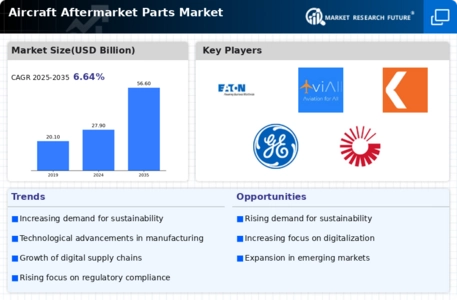
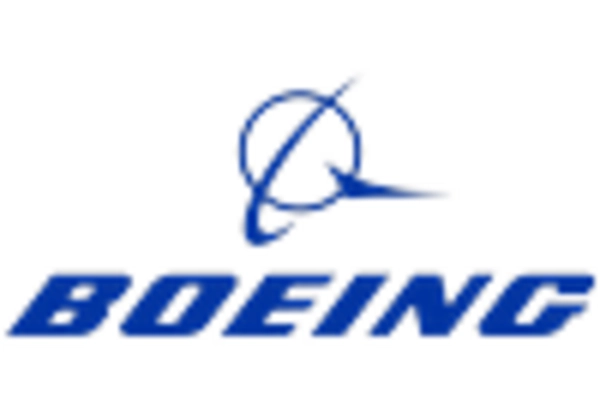
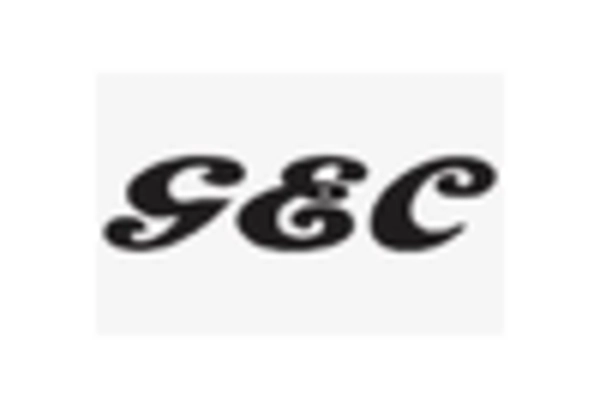
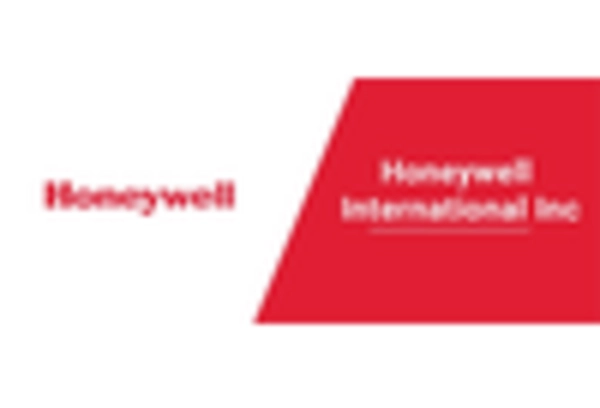
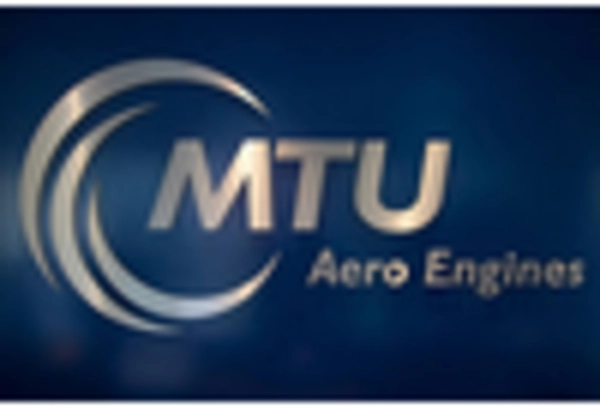
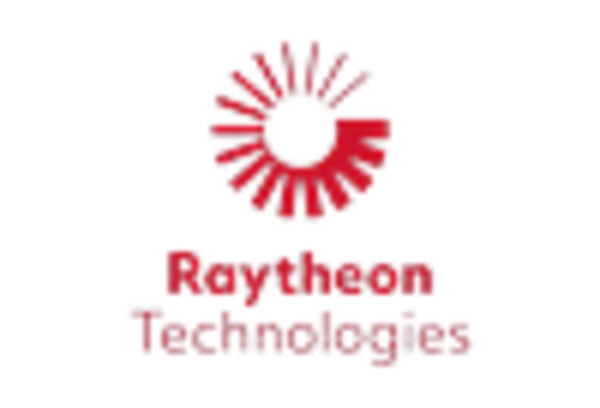
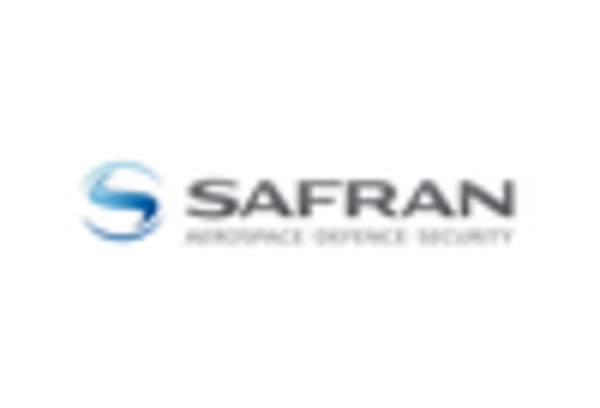









Leave a Comment